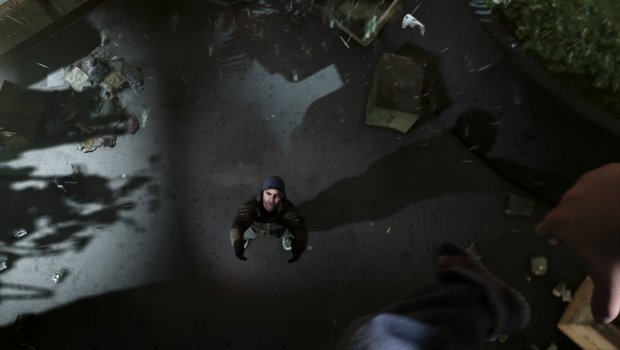Killzones intro made me reassess the next console generation

Editor’s note: This article discusses the first 15 minutes of Killzone: Shadow Fall. Check out our PS4 review and Killzone: Shadow Fall review for non-spoilers.
The game opens, first person, as usual. I am looking out a window at a ramshackled checkpoint set up by some Helghast guards. Right now I can only control the camera, and so I survey the scene below. I hear footsteps behind me. A man approaches, “Let’s go Lucas,” he says. I turn around and step off the bed I was standing on. I’m in a child’s room.
Oh. Huh.
I’m a child, I know this, but the perspective is so foreign to me in a game like that this I instinctively look for the button to uncrouch. The man, my father, approaches and my need to uncrouch grows as he looms over me, easily double my height. He puts my backpack on and smiles reassuringly, “I’m gonna look out for you, and you have to do the same for me,” he says, “You’re gonna be my second in command.” I’m pretty sure I know how this will go, and I’m already preemptively sad, but I’m still so fascinated by the perspective that I can’t rip my gaze from the screen.

What followed was one of the most thought provoking tutorials I’ve ever experienced. I went in ready to experience a vapid military shooter, but what I got was helplessness. Fifteen minutes of being smaller, more petrified, and more powerless than I’ve ever been. I play shooters to simulate the feeling of being in control, and this tutorial was in direct opposition to that feeling.The best part was the entire time I was trying to uncrouch. I knew explicitly that I was a little boy, but my brain could not wrap its head around that fact. Watch, you’ll see. You’ll play the first level and be like “Haha yeah I’m totally a kid, ok so how do I uncrouch? What, I can’t? Ok. So how do I uncrouch?”
I’ve experienced two “wow” factors with the FPS genre in my entire gaming career now. The first was booting up the first Halo game and hearing that haunting orchestral arrangement. The second was a moment in this tutorial. It was when my dad vaulted over a railing to the floor below. He then turned around and reached his arms out to me, “you can do it,” he said. I approached the tall railing--well, tall for me, how do I uncrouch again?--and jumped into my father’s arms. He catches me at the bottom and sets me down, looking into the camera with 100% believable love in his eyes. We then continue on our way, racing through our old neighborhood with me thinking to myself, I’m playing a shooter for God’s sake, what am I doing here? But it’s a tutorial, and I learn everything I need to know in a shooter: directional cues, crouching, jumping, interaction commands, but I’m doing it all as a terrified young boy.

Halo changed the landscape of console FPS’s, there’s no arguing that. And while I’m not saying that the PS4’s Killzone is the new Halo, the fact that it is the first FPS to go up on the console bodes very well. It already set a narrative bar for shooters. I got a very, very strong message from the Killzone storyline, and that was this: mechanics are not enough to make a good Triple-A title anymore. We’re in the new generation, after 8 years we have the ability to shake off tired heuristics and rewrite genres. If a dinky little tutorial in a shooter can get me this excited, I cannot fathom what this generation has in store for me.
Sign up to the GamesRadar+ Newsletter
Weekly digests, tales from the communities you love, and more
Zach was once an Associate Editor for Future, but has since moved into games development. He's worked at EA and Sledgehammer Games, but is now Narrative Director on League of Legends and Valorant at Riot Games.


